Using an ETF pairs strategy may be useful when there’s a divergence between assets that are usually highly correlated, says Cory Mitchell of ETFdb.com and VantagePointTrading.com.
Pairs trading is a dynamic trading strategy any ETF trader can add to their playbook. Some traders use the strategy during volatile market conditions in an attempt to control risk; others use it because they favor one investment over another but realize they could be wrong and want to hedge their bet; and others use it simply when they don’t know whether to go long or short. With a basic understanding of pairs trading, you control risk but can still reap a profit. With so many asset classes, sectors, countries, and indexes available for trade, ETFs provide excellent pair trading candidates, but only if you know what to do
Pairs Trading 101
Pairs trading often involves trading two highly correlated assets. For example, the Dow Jones Industrial Average and the S&P 500 indexes typically move together, and have a high correlation. Pairs traders look for deviations in this typical relationship and then attempt to exploit them. If the Dow keeps moving higher as the S&P 500 drops, the trader takes a short position in the Dow and a long position in the S&P 500.
The appeal is that it seems like a very low risk strategy; price fluctuations are often netted out since there is one long and one short position. By always taking a pair of positions—a long and a short—the trader isn’t betting on direction, but rather simply betting that eventually the two assets will gravitate back to their usual relationship. If the disconnected assets move back to being highly correlated again, the pairs traders reap a profit.
Unfortunately, markets are not always predictable. Assets that were correlated over the last several years may not be correlated tomorrow. Correlations are tendencies for assets to move together, but at any given time they can diverge. If the divergence lasts too long, or the assets continue to move further and further from each other, the trader may be exposed to large losses. Therefore, while pairs trading is often called a “hedging strategy,” stop losses and risk management should still be used, because we can’t always rely on the fact that assets will stay correlated, or reconnect immediately if they disconnect from each other.
Trading highly correlated ETFs isn’t the only way to pairs trade. Another form of pairs trading exists where two ETFs aren’t necessarily correlated, but based on general market conditions, the trader will short one ETF and go long another.
Pairs Trading with ETFs
ETFs provide a ton of pair trade candidates. With loads of different stock sectors, bonds, oil, gold, silver, Treasuries, international markets, and global/domestic indexes to choose from, ETF traders can find numerous opportunities while day trading or swing trading.
Consider our S&P 500 and Dow Jones index example. These indexes are highly correlated, and both are tradable via ETFs: the S&P 500 SPDR (SPY) and Dow Jones Industrial SPDR (DIA). In Figure 1, note the high correlation between the two ETFs. When the two separate, they generally “reconnect,” although how long it takes can vary from days to months.
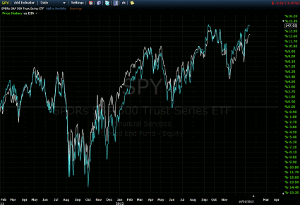
Figure 1. SPY (blue) vs. DIA (white): Daily Chart – Percentage Scale. Source: FreeStockCharts
Click to Enlarge
NEXT PAGE: Pairs Trading Examples
|pagebreak|ETF traders can also pair trade “competitive” ETFs. For example, the United States Oil Fund (USO) and Crude Oil Total Return Index (OIL) often move in lock step as they both track the price of oil, but occasionally they diverge. Such divergences offer opportunity, since the trader can step in and short the stronger one and go long the weaker one, relying on the correlation to reassert itself, resulting in a profit.
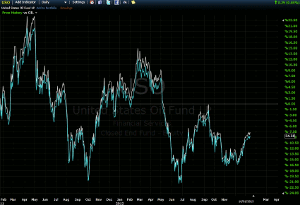
Figure 2. USO (blue) vs. OIL (white): Daily Chart – Percentage Scale. Source: FreeStockCharts
Click to Enlarge
While the strategy seems simple, it is important to note any other tendencies between the ETFs you are trading. For example, OIL outperformed USO just slightly over the period shown. Therefore, this needs to be accounted for. If one asset is continually stronger than another, going long the one that shows stronger tendencies, and short the one with weaker tendencies, is often the better trading approach.
Sector Pairs
Certain sectors also share relationships with each other, although it isn’t always a correlation. Rather, pair traders using sector ETFs rely more on the tendency of how each sector performs in a given economic climate.
For example, during troubled times, the SPDR Utilities Select Sector Fund (XLU) generally outperforms other, more speculative sectors as investors move assets into more stable utility company stocks. Therefore, as panic gripped the market in 2007 and 2008 over financial worries, a pairs trader could have shorted the Financial Select Sector SPDR (XLF) and gone long XLU.
On a much smaller scale, the same scenario occurred in the spring of 2012, as shown on Figure 3. XLF broke its uptrend, and began to decline. The pairs trader could have seen this as an opportunity to short XLF and buy XLU; the assumption being that XLU would be stronger than the declining XLF.
The trade worked out well, it would have been held for just over a month, and a profit would have been made on both positions.
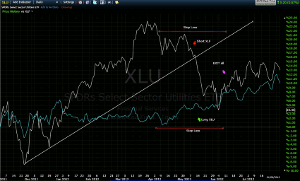
Figure 3. XLU (blue) vs. XLF (white): Daily Chart –Percentage Scale. Source: FreeStockCharts
Click to Enlarge
The position is exited as soon as it appears the trend may be changing. In June, XLF moved above the price high for May, indicating some strength. Since the trade was based on XLF weakness, as soon as the ETF showed strength, the pairs trade is closed. Using a stop loss is recommended; appropriate levels are marked on the chart.
During different phases of the market cycle, some sectors will perform better than others. Monitor which sectors are hot, and look to buy those, while shorting those that are weak. Watch for reversals, as not monitoring the positions (or not using a stop loss) can result in large losses if the trends change.
NEXT PAGE: When Pairs Trading Pays
|pagebreak|Country Pairs
The stock markets of different countries are also tradable via ETF, providing many opportunities for pairs trades. ETFs such as the MSCI Japan Index (EWJ), MSCI Taiwan Index (EWT), MSCI Malaysia Index (EWM) and the MSCI Singapore Index (EWS) are all suitable for creating pairs trades.
MSCI Canada Index (EWC) and the MSCI Australia Index (EWA) usually share a very high correlation, as the two countries have similar economies. For ETFs that are highly correlated, often the best strategy is to go long the weaker one and short the stronger one when the price trends diverge, based on the assumption they will soon fall back in sync with each other.
Figure 4 shows that throughout much of 2012, the ETFs traded in sync, but at times separated. Shorting the stronger and buying the weaker at such times always resulted in a profit (eventually) as the two ETFs eventually converged once again.
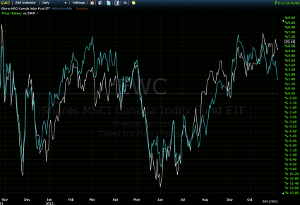
Figure 4. EWC (blue) vs. EWA (white): Daily Chart – Percentage Scale. Source: FreeStockCharts
Click to Enlarge
Another option is trading based on strength and weakness. For example, in early 2012 Mexico (EWW) was a hot market, while Spain (EWP) was not. Going long Mexico and short Spain was a very profitable pairs trade, resulting in significant profits on both trades.
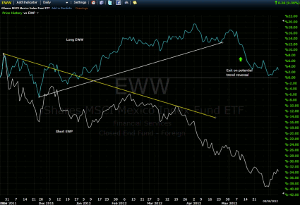
Figure 5. EWW (blue) vs. EWP (white): Daily Chart – Percentage Scale. Source: FreeStockCharts
Click to Enlarge
Index Pairs
There are many indexes that can be used to pairs trade as well. Indexes track commodity prices, bonds, small-cap and large-stock, as well as global markets. By watching indexes a trader can determine which asset classes money is flowing into, and out of.
Pairs traders take advantage of this by buying a strong index and shorting a weak index.
Investors saw 2012 start out with large-cap stocks, represented by the SPDR Dow Jones Industrial Average (DIA) moving higher in a strong uptrend. The Barclays 20-Year Treasury Bond Fund (TLT), on the other hand, was moving lower. To capitalize, a pairs trading strategy involves going long DIA and short the weaker TLT.
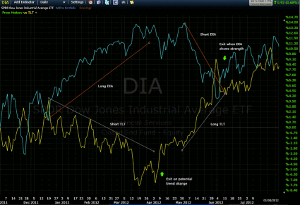
Figure 6. DIA vs. TLT: Daily Chart – Percentage Scale. Source: FreeStockCharts
Click to Enlarge
From January to March, the trade produced profits. Come April though, the trends begin to reverse. The pairs trade is exited as TLT (only one ETF needs to show signs of a reversal) creates a higher low and then moves even higher. The pairs trade is then reversed: a long trade is taken in the strengthening TLT and a short trade taken in the weakening DIA. Once again, stops are used or the trends are closely monitored, as it is possible to lose on both positions if trends suddenly shift.
The Bottom Line
Employing an ETF pairs strategy may be useful when you notice a disconnect between assets that are usually highly correlated. Sector, country, and index ETFs also provide opportunities for the pairs trader, usually involving going long a strong ETF and short a weaker one. Exit the trades when the assets realign or the trends of strong and weak assets reverse. Set a loss limit on each trade, and realize that markets are dynamic—always remember that relationships that existed yesterday may not necessarily exist tomorrow.
Disclosure: No positions at time of writing.
By Cory Mitchell, Contributor, ETFdb.com, and Founder, VantagePointTrading.com





















